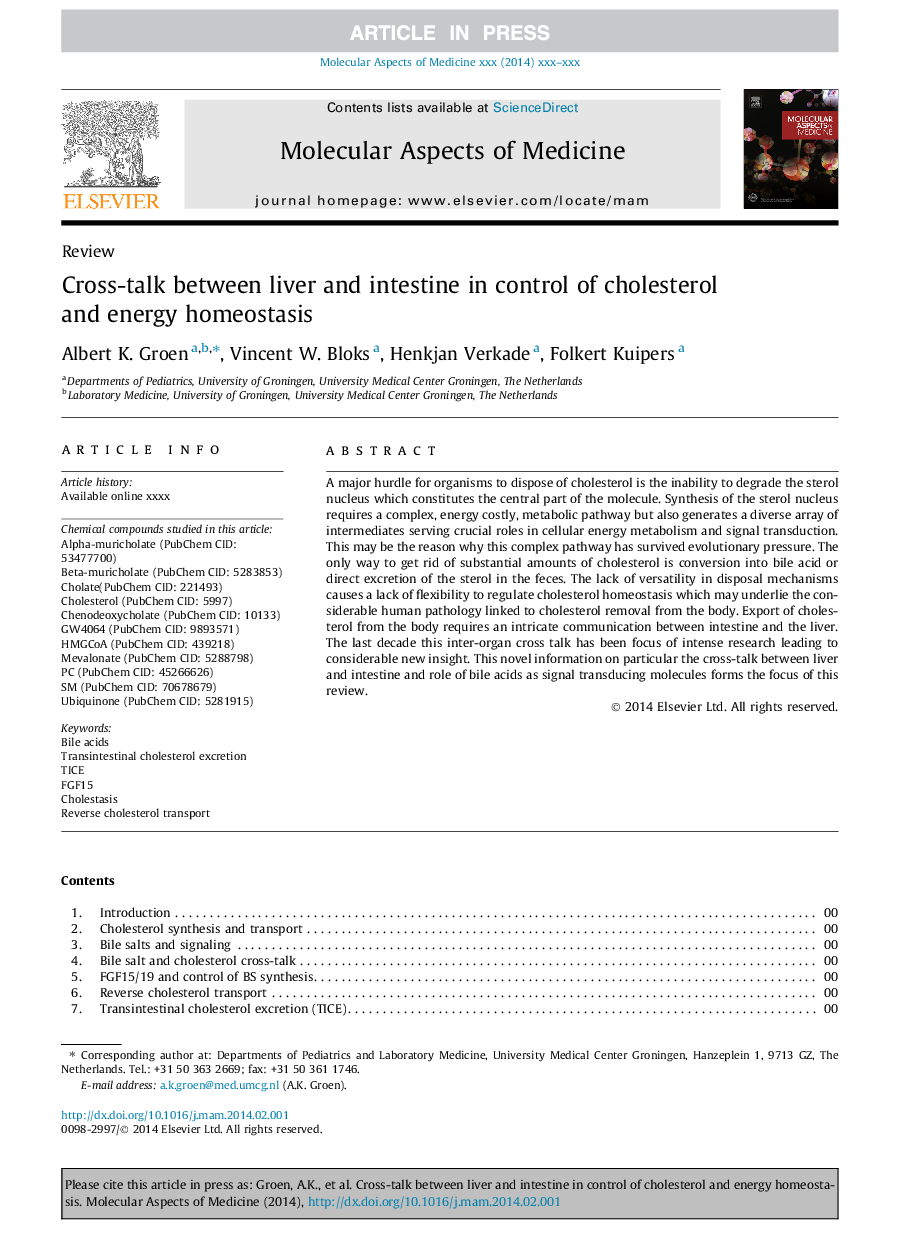| Article ID | Journal | Published Year | Pages | File Type |
|---|---|---|---|---|
| 8341475 | Molecular Aspects of Medicine | 2014 | 12 Pages |
Abstract
A major hurdle for organisms to dispose of cholesterol is the inability to degrade the sterol nucleus which constitutes the central part of the molecule. Synthesis of the sterol nucleus requires a complex, energy costly, metabolic pathway but also generates a diverse array of intermediates serving crucial roles in cellular energy metabolism and signal transduction. This may be the reason why this complex pathway has survived evolutionary pressure. The only way to get rid of substantial amounts of cholesterol is conversion into bile acid or direct excretion of the sterol in the feces. The lack of versatility in disposal mechanisms causes a lack of flexibility to regulate cholesterol homeostasis which may underlie the considerable human pathology linked to cholesterol removal from the body. Export of cholesterol from the body requires an intricate communication between intestine and the liver. The last decade this inter-organ cross talk has been focus of intense research leading to considerable new insight. This novel information on particular the cross-talk between liver and intestine and role of bile acids as signal transducing molecules forms the focus of this review.
Keywords
Related Topics
Life Sciences
Biochemistry, Genetics and Molecular Biology
Biochemistry
Authors
Albert K. Groen, Vincent W. Bloks, Henkjan Verkade, Folkert Kuipers,
